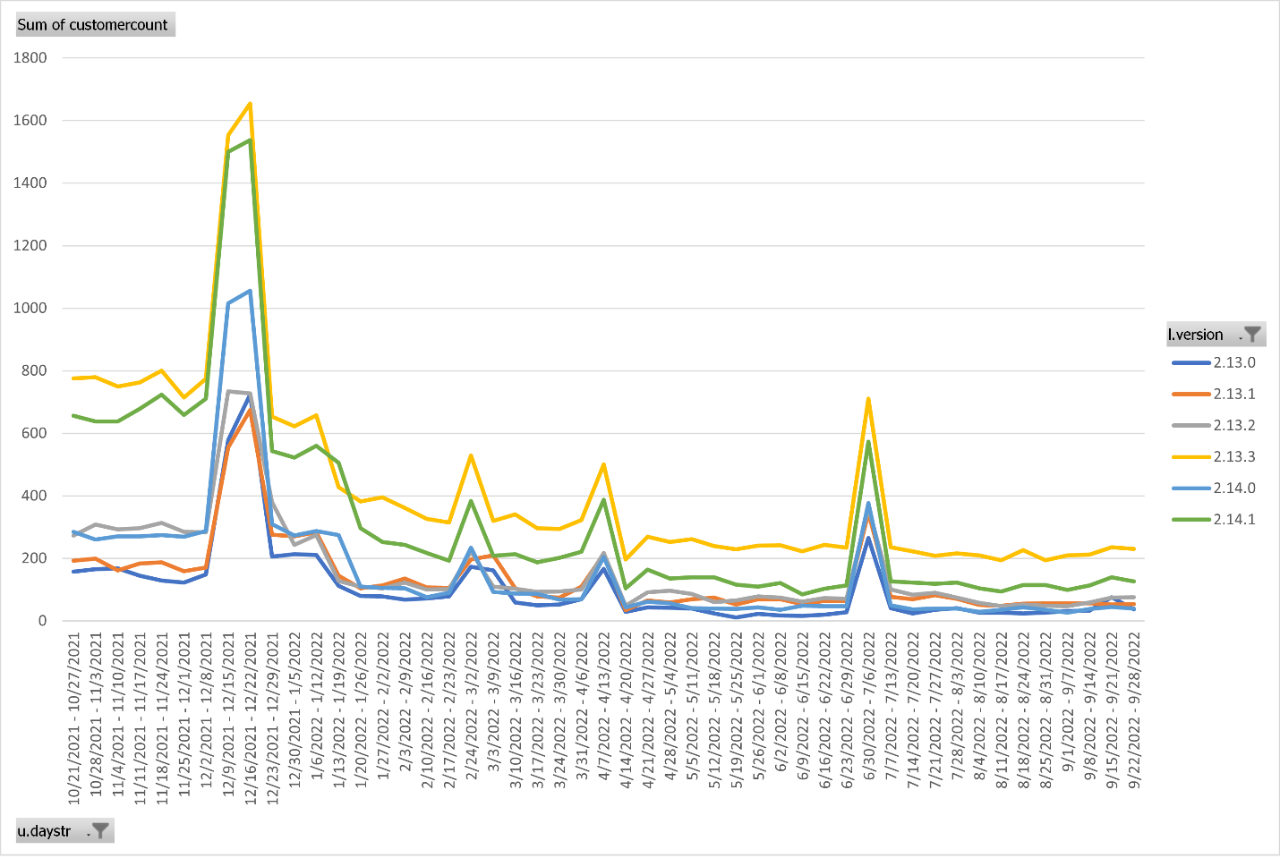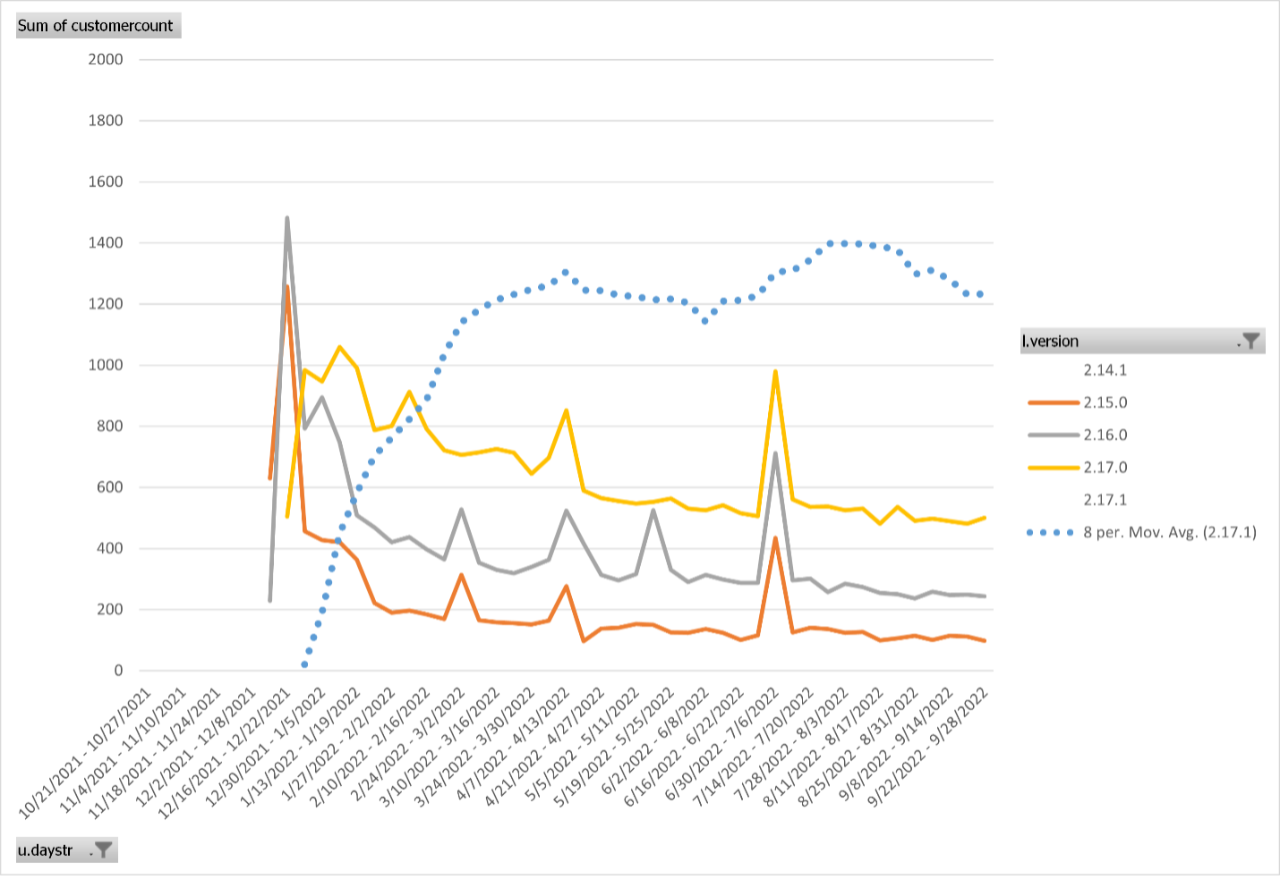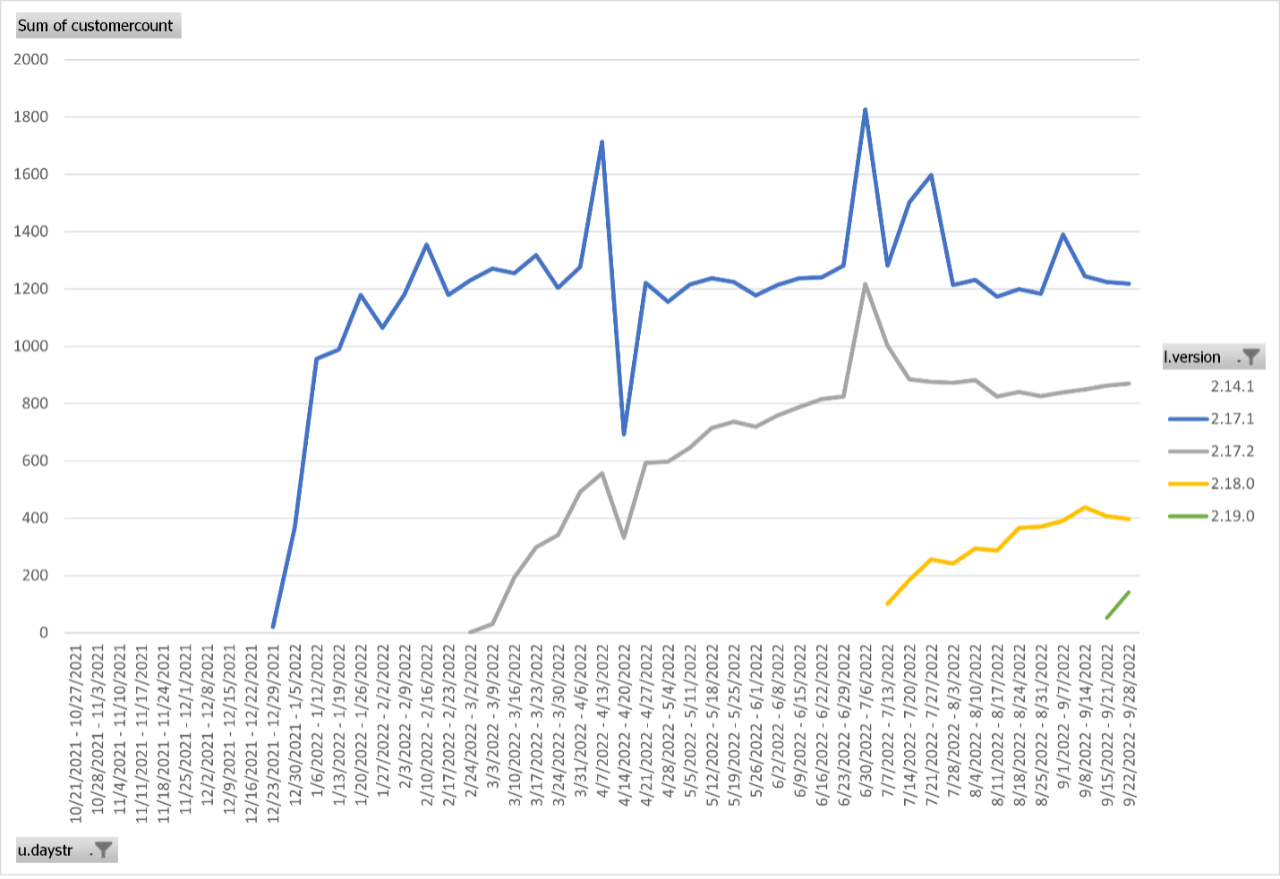Disclosed in December 2021, Log4Shell is an easy-to-exploit vulnerability in a popular open source component, log4j (CVE-2021-44228 and Black Duck Security Advisory BDSA-2021-3731).
Our analysis of the Log4Shell disclosure using data from the Black Duck Knowledge Base (KB) provides some interesting insights into how organizations respond to a high-profile vulnerability like Log4Shell.
The Black Duck Knowledge Base and query data
The KB is a collection of vulnerability information about open source components that is meticulously collected and maintained by our tireless Black Duck security research team.
When our customers use Black Duck®, the tool makes queries to the KB to retrieve information about specific open source components.
We can’t look into the applications our customers are scanning and what they are finding, but we can observe the queries that come into the KB. A query is recorded for several reasons:
- When a customer uses Black Duck to scan one or more applications, a query is performed for each component found. For example, if log4j 2.14.0 was detected in a single application or in a hundred, Black Duck would use a single query to retrieve its information from the KB.
- If a customer uses the Black Duck user interface to examine a specific component, a query is sent to the KB to retrieve its information.
- Black Duck periodically checks to see if any KB updates are available for components in previously scanned applications. If the KB information has been updated, Black Duck generates a query to retrieve the latest information.
Our data about KB queries is entirely anonymized and cannot be linked to specific applications or specific customers.
Having said that, the KB query data does serve as a rough measure of usage, although that interpretation is diluted somewhat by the update process.
The aftermath of the Log4Shell disclosure
Getting back to log4j, let’s see what happened to usage of vulnerable versions after the Log4Shell disclosure.
Figure 1 shows the number of queries per week for a subset of the released versions of log4j, starting from two months before Log4Shell and continuing for a full year after.

Figure 1: Vulnerable versions of log4j
As expected, we see a fairly steady number of queries for these versions of log4j before the Log4Shell disclosure on December 10, probably reflecting normal component detection in customer applications.
But note the big spike of activity that accompanies the Log4Shell disclosure, probably reflecting frequent KB updates for the affected components.
Subsequently, as expected, the usage of the vulnerable components tapers off, punctuated by several spikes that probably correspond to KB updates.
Interestingly, we never seem to reach zero for any of the vulnerable versions. Why not? Several explanations are plausible:
- Organizations might have examined applications and decided that they weren’t using log4j in a vulnerable way.
- Organizations might have changed how they use log4j to mitigate the vulnerability.
- Quickly evolving mitigation advice might have caused confusion.
Adopting the fixed versions of log4j
The fix for Log4Shell was rolled out in several releases in quick succession: 2.15.0, 2.16.0, 2.17.0 , and 2.17.1 were released over a frenetic time period of approximately one week (see Figure 2).
Figure 2: Tracking with various Log4Shell fixes
The intermediate or incomplete fixes—versions 2.15.0, 2.16.0, and 2.17.0—all show the characteristic tapering that we saw before, indicating declining usage over time. Again, the spikes most likely correspond to updates in the KB being propagated to customers.
The fixed version that seems to have taken hold is 2.17.1, which shows sustained usage over time. We can even smooth out the data with a running average to better visualize the adoption of this version (see Figure 3).

Figure 3: Smoothing out the data for log4j 2.17.1
If it ain’t broke…
Version 2.17.1 of log4j definitively fixed Log4Shell and its follow-on vulnerabilities.

Figure 4: Adoption of log4j 2.17.1 and later versions.
Development always continues, of course, and several versions of log4j have been released subsequent to 2.17.1. Figure 4 shows the adoption curves for these versions.
While these versions have a characteristically increasing trend in adoption rate, even 2.17.2 has not reached the same volume of queries as 2.17.1, suggesting that many organizations updated log4j only as long as they needed to be free of Log4Shell.
Conclusions
While we’d like to be able to make statements about X number of applications containing vulnerable versions of log4j, the data we have is not that specific.
However, considering KB queries as a rough measure of applications containing specific versions of log4j, we can draw a couple of conclusions about how our customers handle a major vulnerability like Log4Shell:
- Our customers are quick to respond. The number of queries for vulnerable versions of log4j drops off quickly after Log4Shell was disclosed.
- The KB queries still show vulnerable versions of log4j, so it seems likely that in affected applications, our customers mitigated Log4Shell in some other way instead of updating to a newer version. Updating is not always an option due to cost, testing, or policy, so some customers might have decided to retire older applications rather than patch.
- While we see characteristic uptake for newer versions of log4j (2.17.2, 2.18.0, and 2.19.0), the rate is much slower and lower volume than for 2.17.1. This indicates that customers are much more likely to update a component to mitigate a vulnerability rather than simply as a matter of routine.
It’s also worth noting that organizations that are not using a software composition analysis (SCA) tool like Black Duck have a much larger problem on their hands. If you don’t know what’s inside your applications, you can’t be aware of relevant vulnerabilities and take steps to protect yourself and your users.
An SCA tool provides visibility into the open source components used when you’re building your applications. It helps development teams manage application security risk by proactively notifying teams about new vulnerabilities in the components they’re using.
Continue Reading
AI in DevSecOps: A critical crossroads for security and risk management
Oct 08, 2025 | 6 min read
Key findings from “The State of Embedded Software Quality and Safety 2025” report
Aug 26, 2025 | 3 min read
What you need to know about the NIST Secure Software Development Framework
Aug 12, 2025 | 5 min read

